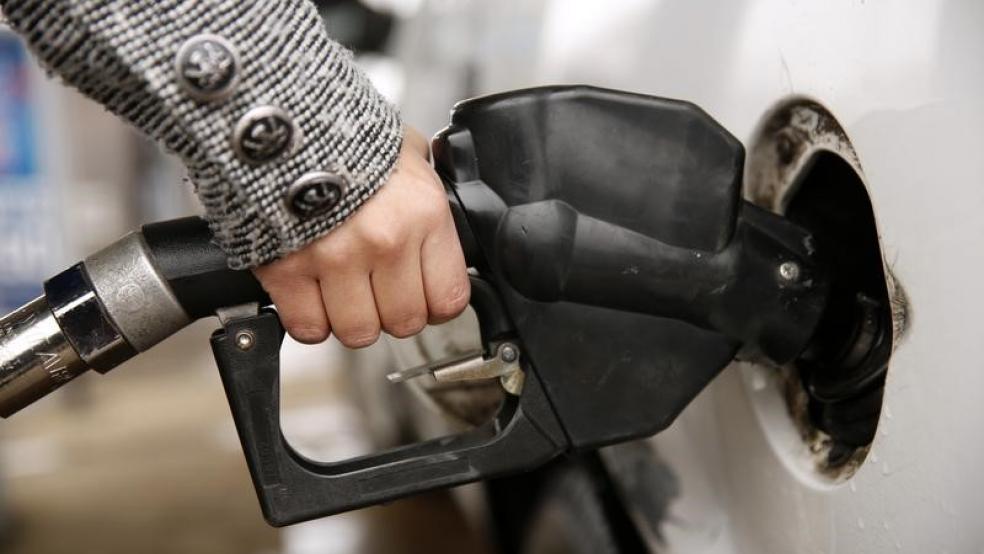The price of crude oil will continue to rise slowly in the short-term, but it faces continued volatility with uncertain geopolitical issues.
The weakness in the global economy and a glut in the crude supply will keep prices low in the immediate future. The Energy Information Administration, an independent statistical arm of the Department of Energy based in Washington, D.C., said yesterday that prices for Brent, the international crude oil benchmark, will average $59 per barrel in 2015 and $75 per barrel in 2016. Prices for West Texas Intermediate (WTI), the U.S. crude oil benchmark, are expected to average $7 per barrel below Brent prices in 2015 and $5 per barrel below Brent prices in 2016.
As the global economy contracts and issues with Iran’s agreement are not finalized, the market will continue to experience uncertainty, although there will not be large swings in prices, said Timothy Hess, a lead analyst for the EIA.
“We could see lower prices stimulate demand and push prices back up especially as the global economy took a step backwards,” he said.
Related: How Iran Is Taking Over the Middle East
Regular gasoline retail prices are forecasted to average $2.45 per gallon during the April-through-September summer driving season, compared with $3.59 per gallon last summer, Hess said. Prices could rise to $2.70 to $2.80 per gallon next year.
The average American household is predicted to spend about $700 less on gasoline in 2015 compared with 2014, as “annual motor fuel expenditures are on track to fall to their lowest level in 11 years,” the EIA report said.
Iran Windfall
Oil prices could fall again in 2016 if the sanctions against Iran are lifted, because this would allow a “significantly increased volume of Iranian barrels to enter the market,” the EIA report said. “If and when sanctions are lifted, the baseline forecast for world crude oil prices in 2016 could be reduced $5 to $15 per barrel” from the forecasted prices.
Related: Schumer Bucks Obama, Gives GOP Iran Plan a Green Light
The cost for gasoline will continue to rise as crude oil prices could reach an average of $55 in the U.S. and $60 internationally in the second half of 2015, but will continue to experience volatility, said Rob Desai, an energy analyst at Edward Jones in St. Louis.
“In the near term, there is likely more downward pressure, which is good for consumers, but we don't expect it to last,” he said.
The outcome of the Iranian talks will be a driver of oil prices. If the sanctions are lifted, that could result in more oil being available on the international market, which would likely "push down international prices," Desai said. If that occurs, consumers could see lower oil prices.
"We believe that longer term oil prices will move higher and that this will start to happen in the second half of the year," he said. "Over the summer we expect prices to remain volatile and move aggressively with geopolitical events and the release of supply numbers."
Crude oil prices could remain in the $50 range throughout the summer because of continued production in America's shale plays, high levels of output by OPEC members and the likelihood that Iran will ramp up production, said Bernard Weinstein, associate director of the Maguire Energy Institute at Southern Methodist University's Cox School of Business in Dallas.
Related: Guess Which States Have the Largest Oil and Gas Fields
Complicating Factors -- Prices Still Low
Of course, oil prices in the U.S. are driven by several factors, and another main element is the high level of oil being stored, reaching near-record levels. While production is expected to decline during the summer due to a “much lower rig count, we are still at high inventory levels, so that could push oil prices lower,” Desai said.
Oil prices will reach a “tipping point” in July and prices will start to rise again, said Chris Faulkner, CEO of Breitling Energy, a Dallas oil and gas exploration and production company. Breitling Energy's internal models show oil finishing the year at $67 to $69 a barrel for WTI.
“Consumers are definitely taking notice of cheaper gasoline prices as new SUV purchases are on the rise and the increased gasoline demand correlates directly to additional oil demand,” he said. “We can use any and all positive triggers right now as we battle to keep our rigs running.”
Since gasoline prices increase each summer, consumers should them to reach $2.65 to $2.70 per gallon this spring, said Kurt Rankin, an economist for PNC Bank in Pittsburgh.
Related: Obama’s Good First Step in Iran Leaves More to be Done
Increased demand will put an “upward pressure” on prices despite a record production of oil, he said.
Consumers will still benefit from a huge reduction in prices, which creates a more sustainable recovery, because they are saving money and will have more future buying power, said Jay Hatfield, president of InfraCap, a New York-based registered investment advisor.
“This is more sustainable in the long run and we are less likely to have recession,” he said. “I am really bullish for longer term growth.”
The attractively low gas prices could also net benefits for auto sales.
“With gasoline prices 40% lower than a year ago, the economy gaining strength and car and light truck sales near record levels, Americans will be hitting the road big time this summer,” said Weinstein of the Maguire Energy Institute. “Nonetheless, gasoline and diesel prices should post only modest gains, despite the surge in demand, because of huge inventories of both crude oil and refined products.”
This article originally appeared in MainStreet.
Read more from MainStreet:
Top 10 Robo Advisors Ranked: Find the Best Automated Online Investing Services
5 Bad Financial Habits You're Teaching Your Kids Without Even Knowing It
5 Hotels Opening in 2015 That Embody Latest Travel Trends




